Mitsubishi Space Star VS Fiat Panda – Specs, Efficiency & Price Comparison
Which model is the better choice – the Mitsubishi Space Star or the Fiat Panda? We compare performance (71 HP vs 70 HP), boot capacity (235 L vs 225 L), efficiency (4.90 L vs 5 L), and of course, the price (11600 £ vs 14100 £).
Find out now which car fits your needs better!
The Mitsubishi Space Star (Hatchback) is powered by a Petrol engine and comes with a Manuel or Automatic transmission. In comparison, the Fiat Panda (Hatchback) features a Petrol MHEV engine and a Manuel gearbox.
When it comes to boot capacity, the Mitsubishi Space Star offers 235 L, while the Fiat Panda provides 225 L – depending on what matters most to you. If you’re looking for more power, you’ll need to decide whether the 71 HP of the Mitsubishi Space Star or the 70 HP of the Fiat Panda suits your needs better.
There are also differences in efficiency: 4.90 L vs 5 L. In terms of price, the Mitsubishi Space Star starts at 11600 £, while the Fiat Panda is available from 14100 £.
Compare all the key specs now and find out which model fits your lifestyle best!
When pitting the Fiat Panda against the Mitsubishi Space Star, city driving enthusiasts will find distinct advantages in each. The Fiat Panda impresses with its compact design and playful demeanor, making it an ideal choice for navigating tight urban spaces with ease. Meanwhile, the Mitsubishi Space Star offers superior fuel efficiency and a spacious interior, catering to those who value practicality on both short and long journeys.
Mitsubishi Space Star
The Mitsubishi Space Star offers a compact yet surprisingly spacious experience, making it an ideal choice for urban dwellers who need agility and comfort. Its sleek design is complemented by a range of vibrant colour options, adding a touch of flair to everyday commutes. With a focus on efficiency and practicality, the Space Star combines a user-friendly interface with modern technology to ensure a smooth driving experience.
details @ presse.mitsubishi-motors.de
@ presse.mitsubishi-motors.de
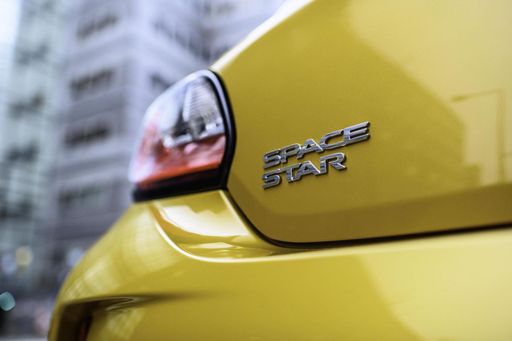 @ presse.mitsubishi-motors.de
@ presse.mitsubishi-motors.de
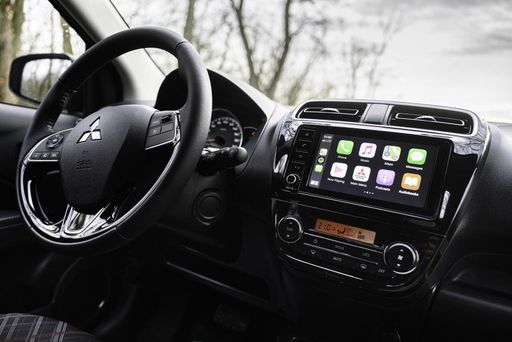 @ presse.mitsubishi-motors.de
@ presse.mitsubishi-motors.de
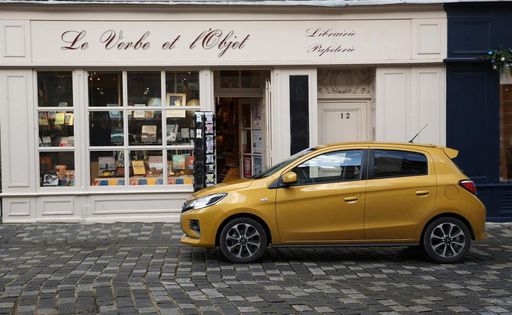 @ presse.mitsubishi-motors.de
@ presse.mitsubishi-motors.de
Fiat Panda
The Fiat Panda is a compact city car that brilliantly combines practical design and efficient functionality. Its boxy shape provides ample interior space and visibility, making it a favourite among urban drivers. With its reputation for reliability and affordability, the Panda continues to be a top choice for those seeking a no-frills, dependable vehicle.
details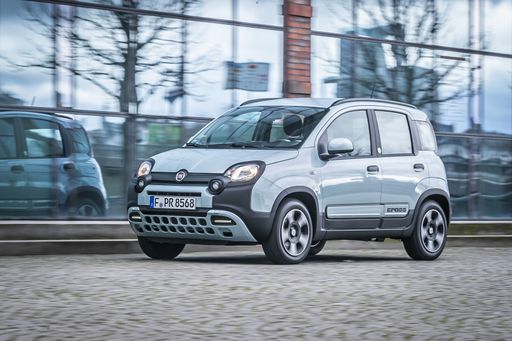 @ media.stellantis.com
@ media.stellantis.com
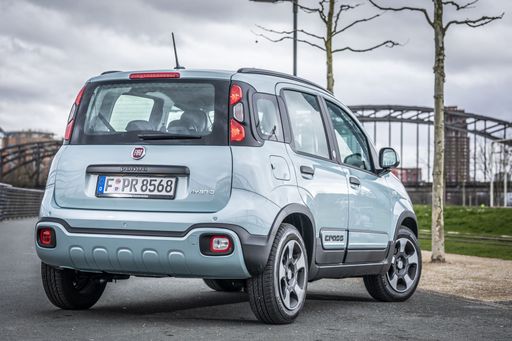 @ media.stellantis.com
@ media.stellantis.com
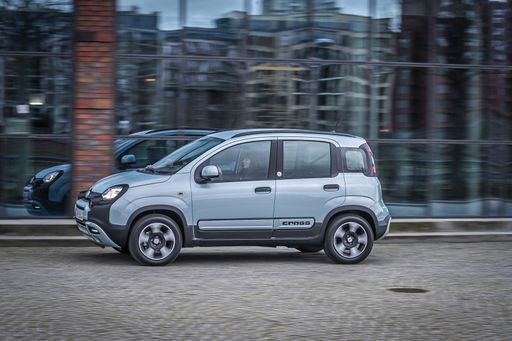 @ media.stellantis.com
@ media.stellantis.com
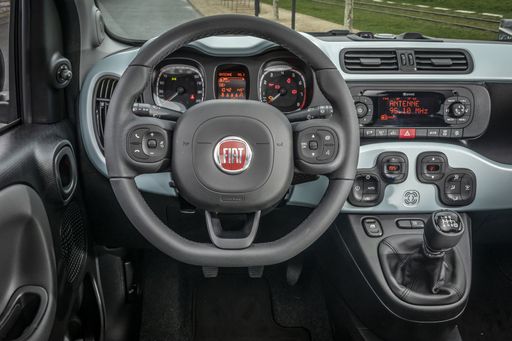 @ media.stellantis.com
@ media.stellantis.com
Panda vs. Space Star: Clash of Compact Titans
Urban driving enthusiasts, rejoice! Today, we dive into a detailed comparison between two popular and efficient hatchbacks gracing the narrow streets and challenging parking spots of modern cities. Both the Fiat Panda and Mitsubishi Space Star have made names for themselves in the segment of compact hatchbacks. But what really sets these cars apart, and how do they stack up against each other? Let’s find out.
The Heart of the Beast: Engine and Performance
The Fiat Panda is powered by a 999 cm3 petrol Mild Hybrid Electric Vehicle (MHEV) engine, delivering a modest yet competent 70 horsepower (HP) and 92 Nm of torque. With a manual gearbox, this front-wheel-drive machine accelerates from 0 to 100 km/h in approximately 13.9 to 14.7 seconds, and can reach speeds up to 164 km/h.
In contrast, the Mitsubishi Space Star comes with a slightly larger 1193 cm3 petrol engine, producing 71 HP and 102 Nm of torque. It offers both manual and automatic CVT transmission options, with a 0-100 km/h acceleration time ranging from 14.1 to 15.8 seconds and a maximum speed of up to 167 km/h. This slight edge in power can make a significant difference in performance, especially for those who prefer automatic transmissions for a smoother drive experience.
Fuel Efficiency: Saving on the Go
When it comes to fuel efficiency, both cars offer economically conscious solutions. The Fiat Panda consumes between 5 and 5.1 liters per 100 kilometers, with CO2 emissions ranging between 113 and 116 g/km. It also boasts a larger fuel tank capacity of 38 liters, potentially allowing for fewer stops at the gas station.
The Mitsubishi Space Star, with its fuel consumption varying from 4.9 to 5.5 liters per 100 kilometers, presents itself as a strong contender in terms of economy. Its CO2 emissions fall within the range of 112 and 125 g/km, slightly beating the Panda in greener emissions. Although its fuel tank is two liters smaller at 35 liters, its superior efficiency could offset the need for frequent refueling.
Space and Comfort: Interior and Cargo
Inside, both hatchbacks cater to small families or city adventurers with seating capacities ranging from four to five passengers. The Fiat Panda offers a trunk capacity of 225 liters, modest for light urban transportation but potentially limiting for larger cargo needs.
The Mitsubishi Space Star, slightly more accommodating, provides up to 235 liters of trunk space, granting a bit more room for those grocery runs or weekend getaways. Both models feature a practical five-door layout, ensuring easy access for passengers and parcels alike.
Dimensions and Maneuverability
The Panda stretches between 3653 and 3705 mm in length, with a width and height of up to 1662 mm and 1657 mm, respectively. These dimensions afford it a compact nature, perfect for city navigation and tight parking situations.
Meanwhile, the Space Star is slightly larger at 3845 mm in length, 1665 mm in width, and a more petite height of 1505 mm. While it offers a broader frame, it maintains agile handling in urban settings, courtesy of its smart design and engineering.
The Verdict: Which Is Right for You?
Choosing between the Fiat Panda and Mitsubishi Space Star will largely depend on your preferences and needs. The Panda shines with its hybrid technology, strong efficiency, and classic Italian appeal. On the other hand, the Space Star impresses with its slightly better power output, versatility in transmission options, and a touch more cargo room.
Budget-conscious city dwellers and young families will find much to love in both models, but ultimately, the decision rests on your priorities: tech-savvy efficiency versus practical power and space. Either way, both hatchbacks are set to handle the urban jungle with ease and distinction.

|

|
|
|
|
Costs and Consumption |
|
|---|---|
|
Price
11600 - 18700 £
|
Price
14100 - 17100 £
|
|
Consumption L/100km
4.9 - 5.5 L
|
Consumption L/100km
5 - 5.1 L
|
|
Consumption kWh/100km
-
|
Consumption kWh/100km
-
|
|
Electric Range
-
|
Electric Range
-
|
|
Battery Capacity
-
|
Battery Capacity
-
|
|
co2
112 - 125 g/km
|
co2
113 - 116 g/km
|
|
Fuel tank capacity
35 L
|
Fuel tank capacity
38 L
|
Dimensions and Body |
|
|---|---|
|
Body Type
Hatchback
|
Body Type
Hatchback
|
|
Seats
5
|
Seats
4 - 5
|
|
Doors
5
|
Doors
5
|
|
Curb weight
940 - 1009 kg
|
Curb weight
1055 kg
|
|
Trunk capacity
209 - 235 L
|
Trunk capacity
225 L
|
|
Length
3845 mm
|
Length
3635 - 3705 mm
|
|
Width
1665 mm
|
Width
1643 - 1662 mm
|
|
Height
1505 mm
|
Height
1551 - 1657 mm
|
|
Payload
360 - 400 kg
|
Payload
365 - 385 kg
|
Engine and Performance |
|
|---|---|
|
Engine Type
Petrol
|
Engine Type
Petrol MHEV
|
|
Transmission
Manuel, Automatic
|
Transmission
Manuel
|
|
Transmission Detail
Schaltgetriebe
|
Transmission Detail
Schaltgetriebe
|
|
Drive Type
Front-Wheel Drive
|
Drive Type
Front-Wheel Drive
|
|
Power HP
71 HP
|
Power HP
70 HP
|
|
Acceleration 0-100km/h
14.1 - 15.8 s
|
Acceleration 0-100km/h
13.9 - 14.7 s
|
|
Max Speed
163 - 167 km/h
|
Max Speed
155 - 164 km/h
|
|
Torque
102 Nm
|
Torque
92 Nm
|
|
Number of Cylinders
3
|
Number of Cylinders
3
|
|
Power kW
52 kW
|
Power kW
51 kW
|
|
Engine capacity
1193 cm3
|
Engine capacity
999 cm3
|
General |
|
|---|---|
|
Model Year
2020 - 2023
|
Model Year
2024
|
|
CO2 Efficiency Class
C, D
|
CO2 Efficiency Class
C, D
|
|
Brand
Mitsubishi
|
Brand
Fiat
|
Mitsubishi Space Star
Introducing the Mitsubishi Space Star: A Perfect Blend of Efficiency and Innovation
The Mitsubishi Space Star continues to impress urban drivers with its compact yet efficient design. Celebrated for its practicality and fuel economy, this hatchback offers a unique blend of new-age technology and reliable performance. Let’s dive into some of the technical details and innovations that make the Space Star a popular choice among compact car enthusiasts.
Engine and Performance
The Space Star is powered by a 1.2-litre, 3-cylinder petrol engine, delivering a respectable 71 PS (52 kW). The engine provides a harmonious balance of power and efficiency, reaching a top speed of up to 167 km/h. With a torque of 102 Nm, drivers can expect smooth city rides and decent highway cruising capabilities. The Space Star's economy ranges from 4.9 to 5.5 litres per 100 kilometres, ensuring that your journeys remain budget-friendly and environmentally considerate.
Transmission and Driving Dynamics
When it comes to the driving experience, buyers have the option of a 5-speed manual transmission or a CVT automatic. This flexibility allows for a more personalised driving experience, whether you prefer the engagement of manual shifting or the convenience of an automatic gearbox. The car's front-wheel-drive setup further enhances its maneuverability, making it an ideal companion for navigating tight city streets.
Design and Dimensions
The Mitsubishi Space Star is designed to turn heads with its sleek, aerodynamic lines while maintaining a practical size. Measuring 3845 mm in length, 1665 mm in width, and 1505 mm in height, it's a perfect fit for urban driving. Despite its compact form, the Space Star offers five seats and five doors, providing ample accessibility and comfort for both the driver and passengers.
Interior Features and Comfort
Inside, the Space Star prioritises comfort and convenience with thoughtfully designed interiors. The luggage space ranges from 209 to 235 litres, ideal for shopping trips or weekend getaways. The vehicle comes in a variety of trim levels, including Basis, Plus, Select, and Top, with each offering distinct features to meet different customer needs. Whether you need basic amenities or more premium touches, the Space Star has a version that will suit your lifestyle.
Safety and Environmental Impact
Safety innovation is a hallmark of the Mitsubishi Space Star, ensuring peace of mind for drivers and passengers alike. Its CO2 efficiency class ranges from C to D, with emissions between 112 to 125 g/km, reflecting its dedication to reducing the environmental footprint. These features contribute to making the Space Star a responsible choice for the eco-conscious driver.
Cost of Ownership
Affordability is another attractive aspect of the Space Star. Prices range from €13,590 to €21,790, making it accessible for a wide array of budgets. Running costs are equally competitive, with monthly expenses estimated between €627 and €767, and cost per kilometre ranging from 25.1 to 30.7 cents, all contributing to a car that is as economical to own as it is to drive.
Conclusion
In summary, the Mitsubishi Space Star offers a compelling package of efficiency, practicality, and modern technology. Its combination of fuel economy, flexible transmission options, and affordability make it a standout choice in the compact car segment. For those looking for a reliable and economical city car, the Space Star remains a strong contender that shouldn't be overlooked.
Fiat Panda
A Renaissance on Wheels: The Fiat Panda
The Fiat Panda, with its unmistakable charm and practicality, has long been a fixture in the compact car segment. In 2024, Fiat has again managed to reinvent this beloved model, introducing innovative features and cutting-edge technology. Let's delve into what makes the new Fiat Panda a formidable player in the world of urban mobility.
Sleek Design and Practical Dimensions
The Fiat Panda retains its iconic tall and boxy silhouette, ideal for urban environments. Measuring between 3653 mm and 3705 mm in length, and with a width range of 1643 mm to 1662 mm, it's compact enough for tight city streets yet Spacious enough to ensure comfort. The height varies between 1551 mm and 1657 mm, offering a commanding view of the road and easy ingress and egress—the Panda's ample boot space of 225 litres and its versatile five-door configuration further boast its practical nature.
Powertrain Innovations
Under the bonnet, the Fiat Panda houses a 1.0 GSE Hybrid engine. This mild-hybrid petrol engine is designed to enhance fuel efficiency and reduce emissions. Delivering 70 PS (51 kW), this engine is a testament to Fiat's dedication to marrying performance with eco-friendliness. The innovative three-cylinder engine offers a torque of 92 Nm, providing sufficient power for urban and suburban driving. With a CO2 emission rating of 113 to 116 g/km, it occupies the C to D CO2-efficiency class range.
Performance that Suits Urban Life
The Panda excels in urban driveability, offering a top speed between 155 km/h and 164 km/h. The acceleration from 0 to 100 km/h takes between 13.9 and 14.7 seconds, making it spirited enough for daily commuting while ensuring optimal fuel economy, with a consumption of 5 - 5.1 L/100km. Such statistics highlight its balance of performance and efficiency, echoing Fiat's commitment to practical performance.
Interior, Comfort, and Connectivity
Inside, the Fiat Panda exudes a blend of comfort and modern technology. It caters to four to five passengers comfortably, offering a thoughtfully designed interior to enhance the user experience. Features such as user-friendly controls, a well-organised dashboard, and optional infotainment systems keep the Panda competitively modern in its segment.
Safety and Technology
The Fiat Panda is equipped with various safety features, designed with urban journeys in mind. It offers technologies such as traction control and hill-hold assist, catering to the demanding stop-and-go nature of city driving. The enduring charm of the Fiat Panda is bolstered by its underappreciated technological sophistication, ensuring that every journey is as safe as it is enjoyable.
Affordability and Value
With a price range from €15,990 to €19,290, the Fiat Panda remains an excellent value proposition. It is cost-effective, economical to run, and backed by Fiat’s reputation for reliability, making it a prudent choice for customers looking to balance style, efficiency, and value.
The Fiat Panda of 2024 stands as a testament to Fiat’s ingenuity, maintaining its reputation for practicality while embracing modern efficiency and innovation. Whether for the daily commute or a spontaneous adventure, the Panda continues to deliver a driving experience that is both enjoyable and efficient.
The prices and data displayed are estimates based on German list prices and may vary by country. This information is not legally binding.
